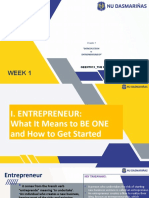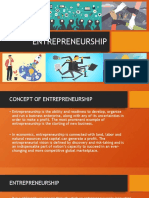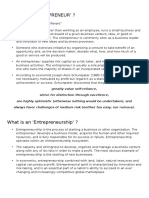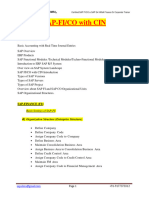0% found this document useful (0 votes)
28 views28 pagesLecture 1 Module 1
The document outlines the advantages of being an entrepreneur, including the ability to create wealth and help communities. It discusses various types of entrepreneurs, such as small business owners and online entrepreneurs, and emphasizes the importance of characteristics like passion and tenacity for success. Additionally, it covers funding stages for startups, including pre-seed, seed, and Series A to C funding, highlighting the financial strategies entrepreneurs can use to grow their businesses.
Uploaded by
202001974Copyright
© © All Rights Reserved
We take content rights seriously. If you suspect this is your content, claim it here.
Available Formats
Download as PDF, TXT or read online on Scribd
0% found this document useful (0 votes)
28 views28 pagesLecture 1 Module 1
The document outlines the advantages of being an entrepreneur, including the ability to create wealth and help communities. It discusses various types of entrepreneurs, such as small business owners and online entrepreneurs, and emphasizes the importance of characteristics like passion and tenacity for success. Additionally, it covers funding stages for startups, including pre-seed, seed, and Series A to C funding, highlighting the financial strategies entrepreneurs can use to grow their businesses.
Uploaded by
202001974Copyright
© © All Rights Reserved
We take content rights seriously. If you suspect this is your content, claim it here.
Available Formats
Download as PDF, TXT or read online on Scribd
/ 28























































































